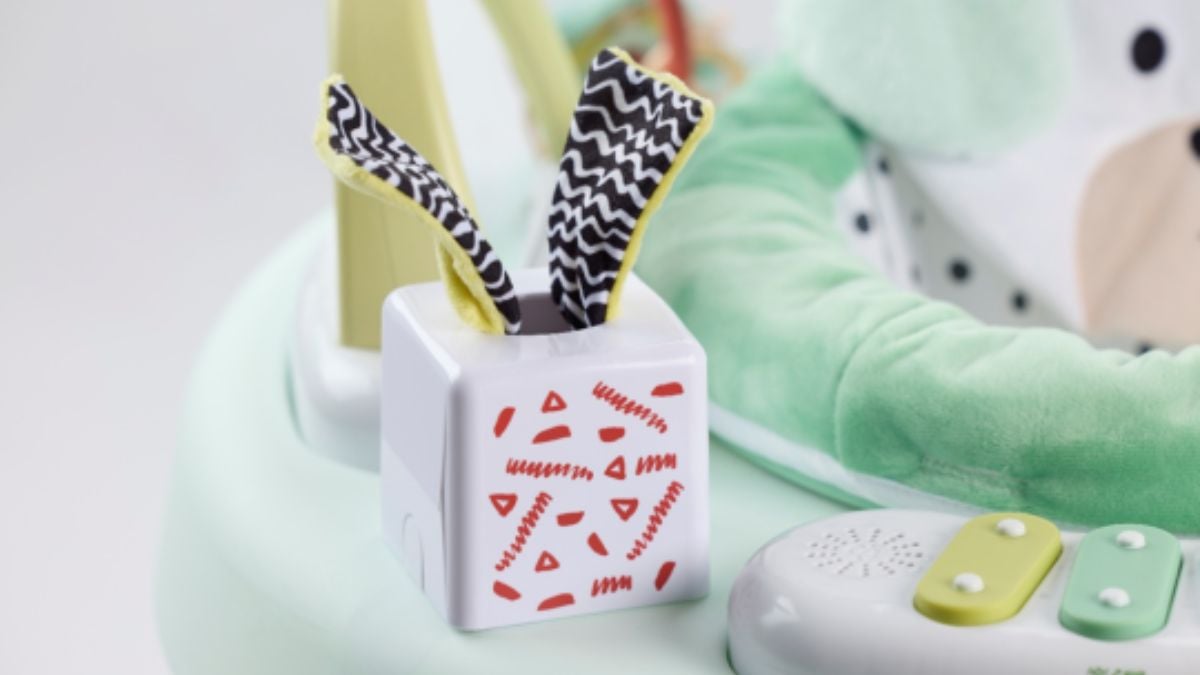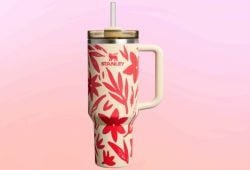
The U.S. Consumer Product Safety Commission (CPSC) has announced the recall of a Fisher-Price toy that poses a choking hazard for babies. If you’re a customer of this brand, here’s what you need to know about the affected product and what actions to take if you have one.
Which Fisher-Price toy was recalled?
The recalled item is the tissue box toy sold with the 3-in-1 SnugaPuppy Activity Centers. The toy is white with red trim and includes sensory fabric tissues. One side features a black-and-white wavy stripe pattern, while the other has raised yellow and green polka dots.
Why was the Fisher-Price SnugaPuppy recalled?
According to the CPSC, the toy can come apart, exposing small plastic clips that pose a choking hazard to young children. While no injuries have been reported so far, Fisher-Price did receive a report of one unit coming apart, and a baby putting a small clip in their mouth.
ALSO READ Johnsonville sausages recalled due to potential health risk
Where was the recalled Fisher-Price SnugaPuppy sold?
About 15,300 units of this product were sold between February 2022 and March 2025 for approximately $13 at the following retailers:
- Hobby Lobby
- Kohl’s
- Macy’s
- Marshalls
- Nordstrom
- Ross
- TJMaxx
- Walmart
- Amazon
What should I do if I purchased the SnugaPuppy?
The Consumer Product Safety Commission asked all individuals who have this toy to stop using it immediately and keep it out of the reach of children. Consumers can also contact Fisher-Price at 855-853-6224 from 9 a.m. to 6 p.m. Eastern Time, Monday through Friday, to receive a free replacement toy.
After contacting the company, they will be asked to permanently mark the tissue box toy with the word “Recalled” and the unique identifier, to mark the fabric sensory tissues with an “X,” and to upload a photo of the marked toy to https://service.mattel.com/us/recall.aspx. Upon receiving the replacement confirmation email, consumers should dispose of the recalled product in the trash.
History of Fisher-Price
Fisher-Price was founded in 1930 by Herman G. Fisher, Irving L. Price, and Helen M. Schelle in East Aurora, New York, where the company’s headquarters are still located. The founders launched their first line of toys based on the belief that play is essential for children and their families to explore and connect with the world around them.
From the start, Fisher-Price focused on creating toys for babies and preschool-aged children, helping them learn, relax, and enjoy their early experiences. The brand stood out as a pioneer by targeting the preschool market, and its first toy collection was so popular that the company struggled to keep up with demand.
ALSO READ Attention! Forever 21 gift cards will expire soon; you won’t be able to use them on this date
However, with the outbreak of World War II, Fisher-Price had to halt toy production to support the U.S. military’s needs. After the war, a boom in construction caused a shortage of wood, prompting the company to begin using plastic in toy manufacturing.
In the late 1960s, Fisher-Price was acquired by Quaker Oats, which fueled rapid international growth and expansion into other categories, such as baby gear and dolls. In the 1980s, the company launched its first product line specifically aimed at early childhood development.
In 1993, Fisher-Price merged with Mattel, allowing it to expand globally through Mattel’s subsidiaries in Europe, Latin America, and Asia—solidifying its presence both in the U.S. and around the world.
What was Fisher-Price’s first toy?
Fisher-Price’s first toy, released in 1931, was called DR. Doodle.
What is the Consumer Product Safety Commission?
The Consumer Product Safety Commission (CPSC) is responsible for setting safety standards for consumer goods and overseeing the recall of products that pose risks. Its main mission is to protect the public from serious injuries or even death caused by hazardous products. These include items that may pose fire, electrical, chemical, or mechanical risks, as well as products that could be harmful to children.









